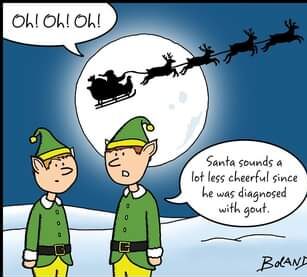I get a lot of questions from residents and new attendings about the liability ER physicians take on when co-signing charts for APPs (advanced practice providers, aka nurse practitioners/physician assistants).
To start, a small disclaimer: local practices vary and there are certain guidelines that many hospital systems have instituted. When I worked for EmCare, there were really no guidelines other than ‘the charts need to be signed’. This meant adding an addendum on every chart was unnecessary and sort of forced the physician to be proactive about reviewing cases he or she thought were high-risk. With TeamHealth, there are specific criteria. An APP can see and disposition any patient, but certain ones must be personally evaluated by yourself as well (anyone under the age of five, any patient triaged as a level 3 or higher, etc). Attestations must include a statement on those charts indicating that you personally saw and evaluated those patients. Supervision is definitely a high-risk area and one that is often overlooked.
In my new book, How to Not Kill your Patients, I’ve gathered advice from experienced ER physicians and included a chapter further explaining how to mitigate the risk of signing off on charts of patients you never saw. Here’s an excerpt:
What’s my liability in all of this? If an APP makes a mistake, can I be sued?
Absolutely. When you are expected to see x number of patients per hour and have two or three APPs working alongside you, there’s no way you can see every patient whose note you will ultimately be signing. Not until 24 hours later when you’re clearing up your queue of charts will you realize how many charts you actually have to sign. You can take the time to put an addendum on each one – indicating whether or not you saw the patient, your findings, your return precautions, your assessment – but with the vast majority of them you will just read the note and co-sign it. Most hospitals do not have a written policy for which cases must be seen by a supervising physician.
In one case where both the physician and PA were named, a patient presented to the ED with a fracture that was misdiagnosed by the PA. “The patient never saw the physician, and he didn’t even know the patient was in the hospital,” said the malpractice defense attorney. But “A 2010 decision by the Tennessee Supreme Court held that a supervising physician can be held vicariously liable for the negligence of his or her PA even if the physician never saw or treated the patient. This means that the doctor may automatically be held liable if the PA is found to have been negligent.”
Is there a way to minimize my risk? What if there’s a particular chart I’m not comfortable co-signing since I didn’t lay eyes on the patient?
You can say just that. For instance, “Physician Attestation: This patient was not presented to me and the case was not discussed with me while the patient was in the department. I was not involved in the care or decision-making process of this patient.” Will that actually work? No. Your name is still listed as the supervising physician and you are responsible for co-signing the chart. It doesn’t hurt to write it but a better solution is to speak to the APP involved in the care of that patient and express your concerns. Have them write an addendum clarifying anything. Remember that we all make mistakes. For the most part, they are very open to feedback and dedicated to learning and bettering their care. Many of our midlevel providers are reimbursed for attending training courses. Educate them when appropriate so that everyone benefits. If their charting is not to your liking, send them an email. In my experience this usually fixes the problem.
Consider doing patient call-backs on any questionable chart you come across. This can be time consuming, but call-backs significantly improve patient satisfaction. This is an opportunity to see how the patient is doing the day after the ED visit and an opportunity to have them return or follow-up if symptoms are not improving. PS. This is a great way to use scribes as well!
If the thought of signing off on notes for patients you never saw frightens you just a little, that’s normal. If it keeps you awake night after night, the beautiful thing about emergency medicine is that there’s a job for everyone. You can take a position in a smaller hospital where it will likely be single coverage (ie just you). Every patient that comes in gets seen by you. You can work in academic centers where certain attendings are often delegated to co-sign all of a midlevel’s charts. Some of the larger corporations offer additional RVUs for every midlevel chart that’s signed, and I’ve heard of physicians going as far as to signing in from home on their days off to co-sign notes and earn extra cash. If you don’t want this responsibility, you don’t have to take it on.
A scary case to keep you on your toes
A 58-year-old male presented to the ED with abdominal pain. The PA ordered labs and an acute abdominal series. She ordered Dilaudid and Toradol before reporting to the ER doctor that ‘all results are normal’. He evaluated the patient and agreed to discharge home. The only problem? The white blood cell count was 14,000. The doc had no idea because he hadn’t bothered to check the results for himself. The patient went to another ED six hours later with a perforated appendix.
Learning points:
Our job is to supervise APPs; it is not their job to be a doctor. Until you develop a rapport and level of comfort with midlevels, you should have a lower threshold for seeing patients that they consult you on. Think of APPs as an extension of you – your name is on the patient’s prescriptions and discharge paperwork. More importantly, your name is on the bill that comes to that patient. Most importantly, your name will likely be on the subpoena as well.




